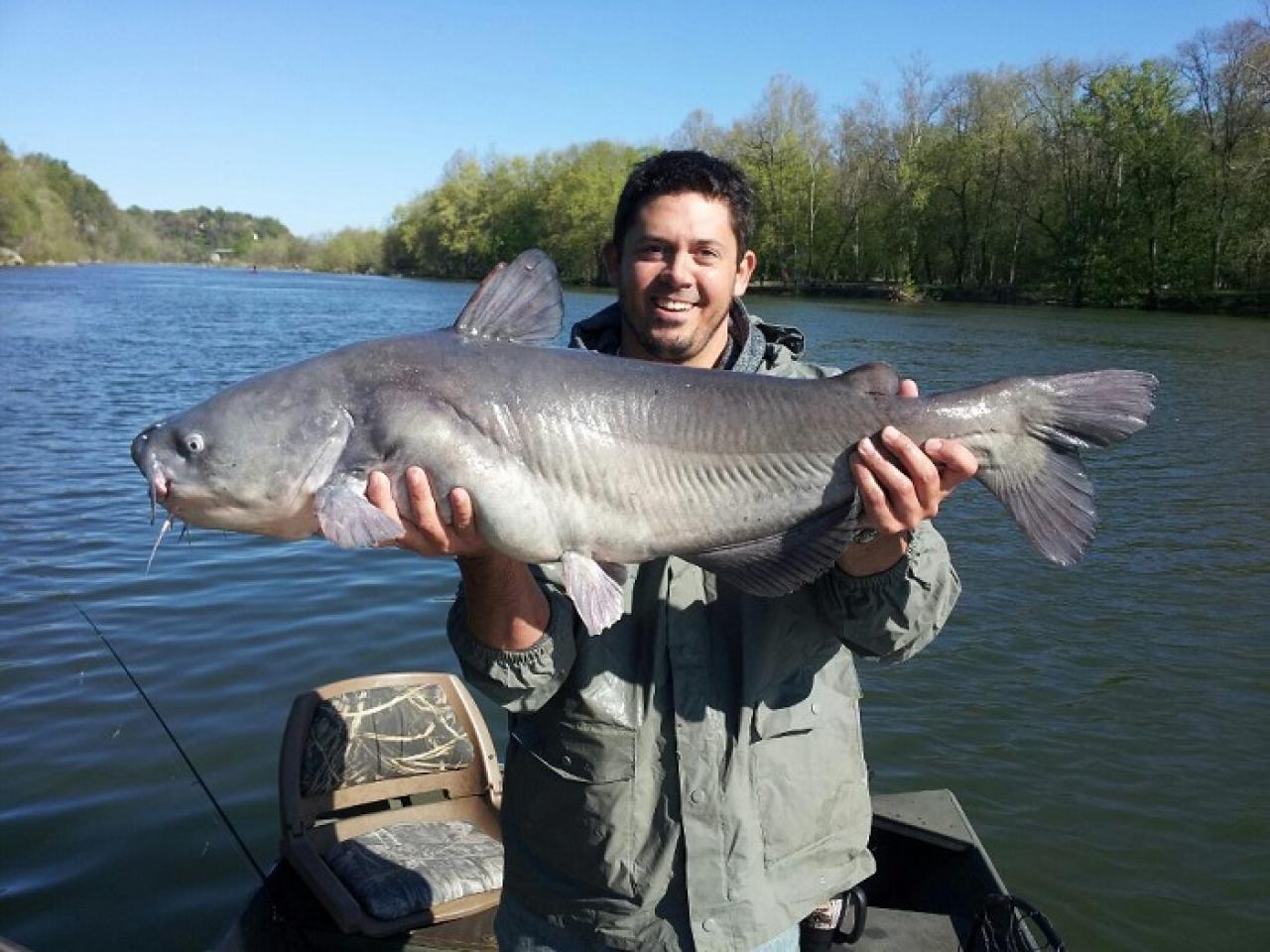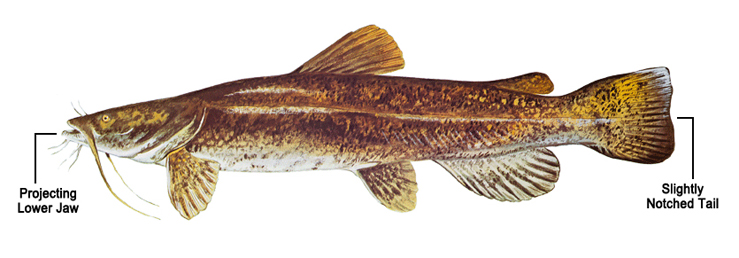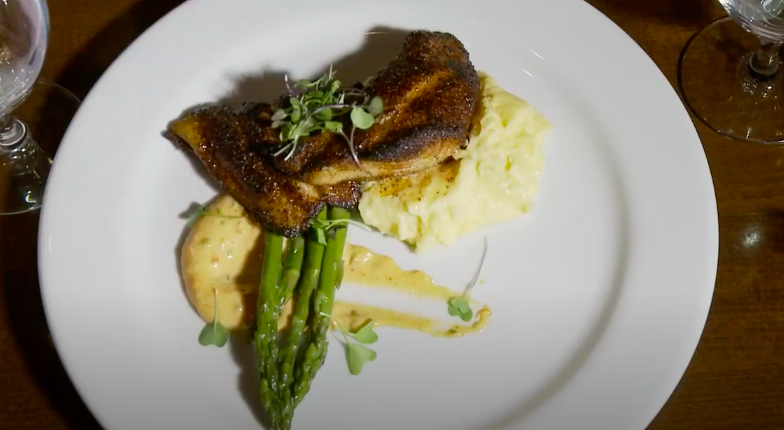
The Maryland Department of Natural Resources Needs Your Help!
The Chesapeake Bay and its tributaries are under siege. Blue and flathead catfish in the bay and its tributaries are posing a major economic and ecological threat and without any natural predators, their numbers continue to increase rapidly. These invaders eat native fish and plants as well as macroinvertebrates, like blue crabs and mussels, and can cause damage to their habitats. Continue reading to learn more about these invasive species and find out how you can join us in helping to beat them!
Blue Catfish
Blue catfish are the largest of the North American catfish and can easily exceed 100 pounds. They are generally slate blue on the back to silvery/white on the underside and have a deeply forked tail. The native range of blue catfish extends from Minnesota and Ohio southward into Mexico. They prefer the large river basins of the Ohio, Mississippi, and Missouri River drainages. However, due to extensive introductions, their current range incorporates several Atlantic drainage systems as well. As an introduced sport species in tidewater Virginia, blue catfish have become very plentiful in the Potomac River and in several Virginia tributaries to the Chesapeake Bay.
More information about the blue catfish can be found on our Fish Facts Page.

Flathead Catfish
Flatheads differ greatly in appearance from most other catfish species. They have a squarish tail, sometimes slightly notched. Their backs and sides are often an olive or light brown color with darker mottles or specks, and their bellies are often white or pale in color. Their heads are compressed, or flattened, and they have a protruding lower jaw. Flathead catfish can reach sizes in excess of 100 pounds but much smaller specimens have been encountered in the Chesapeake Bay region. Flathead are an introduced species and are currently found in only a few places in the Chesapeake Bay; the Potomac River, Upper Bay, Elk and Sassafras Rivers.
Tracking the Blue Cat
Due to their explosive growth in the Chesapeake Bay and its tributaries and their voracious appetite, blue catfish are of particular concern. They pose a serious risk to other species and the delicate balance of the Bay’s ecosystem. Because of the damage they can cause our native species, Governor Wes Moore is asking the federal government for fishery disaster assistance.
The Maryland Department of Natural Resources has several efforts underway to help better track and understand blue catfish and their potential impact on the local ecosystem.
In 2020, department biologists began tagging blue catfish using both radio and acoustic transmitters. Acoustic tags function well in deep, brackish water like the Chesapeake Bay and river mouths, ...." Read more about how DNR is tracking this species.
Save the Bay
While Maryland’s Department of Natural Resources is investigating methods of controlling the spread and abundance of these fish, there is a way that we can help right now. And it’s an easy tried-and-true method that’s worked for centuries—eat them! Often compared to the taste of striped bass, these illegally introduced invasive species are not only edible but delicious!

Even with increased fishing pressure, these tasty fish are not only fun and easy to catch but also to cook. Try these tasty fish on the menu at one of the many Maryland restaurants. Or catch and cook at home with this easy 6 Ingredient Catfish Recipe, or watch the video. You can find more recipes here and here.
Get Ready for Your Next Fishing Outing
In need of additional information, inspiration, or a preview of what Maryland has to offer? Check out Fish & Hunt Maryland's latest articles written by fellow anglers and local partners.
Be sure to acquire your license from the Maryland Department of Natural Resources if you plan on heading out on your own, charter passengers are covered by the captain's license.
Visit our Planning Resources page for information on fishing charters, guides, lodging options, marinas, retailers and more. And if you're up for a quick getaway, check our Visit Maryland for places to stay and things to do once you've caught your fill!